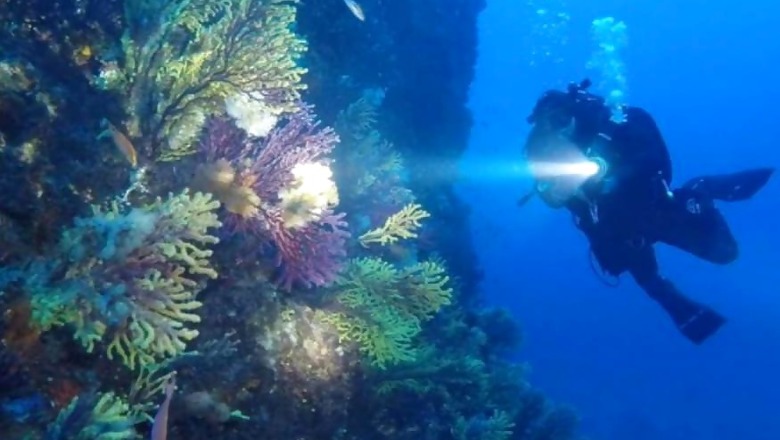
views
A suspected toxic spill along a beach on Russia’s Kamchatka Peninsula has killed 95% of marine life on the surrounding seabed, local scientists have said, following a weeks-long campaign to investigate the mysterious incident.
Local surfers were the first to spot that something was wrong at Khalaktyr beach after about 20 people in a surf camp experienced severe retina burns and symptoms similar to food poisoning.
In early September, the water changed color to a greyish-yellow, with a thick milky foam on the surface, and a strong foul smell filled the air. A few days later, octopuses, seals and other sea creatures began to wash up on the beach.
The local authorities at first dismissed the reports. But amid mounting pressure, Russia’s Investigative Committee Wednesday launched a criminal probe into suspected violations in the use of environmentally hazardous substances and waste and marine pollution.
In a meeting with Kamchatka Governor Vladimir Solodov, local scientists reported that the majority of marine life on the seabed was dead.
“On the shore, we did not find any large dead sea animals or birds,” scientist Ivan Usatov said according to a report posted on the governor’s official website. “However, when diving, we found that there is a mass death of benthos [bottom-dwelling organisms] at depths from 10 to 15 meters — 95% are dead. Some large fish, shrimps and crabs have survived, but in very small numbers.”
Large amounts of dead molluscs and other marine creatures were found onshore in the area of Khalaktyr beach.
Large amounts of dead molluscs and other marine creatures were found onshore in the area of Khalaktyr beach.
The scientists said they believe the contaminated area is much larger than the parts they examined and that the remaining marine life is under threat due to lack of any sustenance left for them to survive on.
A photographer who participated in the underwater expedition with the scientists also experienced a retina burn, the report added.
The findings concur with earlier accounts from locals posted on social media.
“Our guys went diving and they came back to surface with tears on their eyes! The entire seabed was full of dead animals’ corpses,” a local tour guide Kristina Rozenberg wrote on her Instagram page. “All of our underwater beauty is of gray and yellow colors, the fish looks like they’ve been boiling in hot water… and this is all happening just 200 meters away from the house I live in.”
Initially, Kamchatka’s Ministry of Natural Resources and Ecology insisted there was no such issue, saying the color of the water and the smell was normal in the area and that “nothing abnormal” had been recorded.
That statement drew a social media backlash, which gained more traction after a post from a prominent
YouTuber Yury Dud, featuring drone shots of a dark layer on the surface of the water and dozens of dead animals on the shore, went viral.
Greenpeace experts have taken samples from the banks and mouth of the Nalycheva river, which passes by a toxic waste dump being investigated as a possible source of the substance.
Greenpeace experts have taken samples from the banks and mouth of the Nalycheva river, which passes by a toxic waste dump being investigated as a possible source of the substance.
It is still unclear what caused the contamination. Initial probes showed that levels of phenol, a substance often used as antiseptic or disinfectant, were 2.5 times higher than normal, and petroleum levels 3.6 times higher. Local media outlets have speculated about a possible oil tanker leak or military drills gone wrong, which the Defense Ministry denied.
“The investigators are checking all possible sources of pollution, including the territories of landfills adjacent to the Avachinsky Bay and the coastal strip of Khalaktyr where toxic chemicals are stored,” the Investigative Committee said in a statement.
The Russian branch of Greenpeace pointed to a nearby toxic waste dump as a possible source of the leak. Kamchatka officials revealed Tuesday that the perimeter at Kozelsky site, which stores over 100 tons of toxic substances, including pesticides, had been breached.
The Kamchatka governor insisted Wednesday that the area would be recultivated “no matter what.”
This is the latest in a string of ecological disasters Russia has seen in recent years, coming four months after 20,000 tons of fuel from a damaged tank poured into a nearby river in the Siberian city of Norilsk.
Read all the Latest News and Breaking News here




















Comments
0 comment